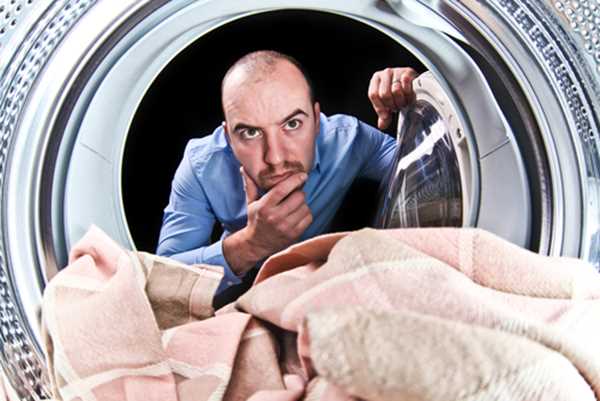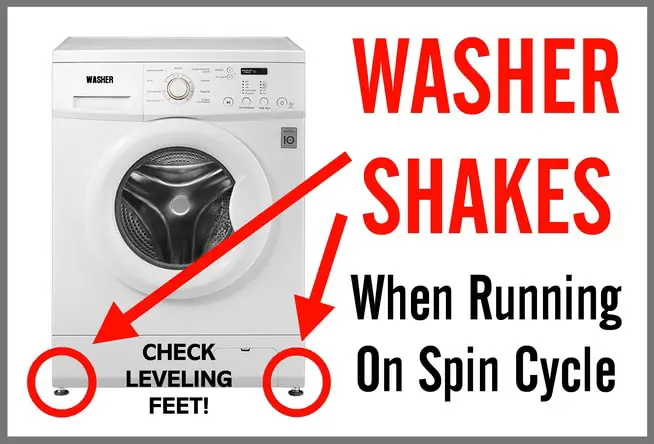
Does your washing machine dance around your laundry room during every wash cycle? A vibrating washing machine can be a frustrating and potentially damaging problem. Not only can it create a lot of noise, but it can also cause the machine to move and potentially damage the flooring or nearby furniture.
Fortunately, there are several easy and effective ways to stop a washing machine from vibrating. First and foremost, it is important to ensure that the machine is level. This can be done by adjusting the legs to make sure they are all making contact with the floor. It may require a bit of trial and error to find the perfect balance, but once achieved, it can greatly reduce vibrations.
In addition to leveling the machine, it is also important to evenly distribute the laundry inside the drum. Overloading the machine can cause it to become unbalanced and lead to excessive vibrations. Be sure to follow the manufacturer’s guidelines for load size to prevent this from happening.
Another useful tip for reducing vibrations is to use anti-vibration pads or mats. These can be placed underneath the machine and help to absorb some of the excess movement. Additionally, a sturdy and stable platform, such as a piece of plywood, can also be placed underneath the machine to further reduce vibrations.
By following these essential tips and tricks, you can put an end to the annoying vibrations caused by your washing machine. Not only will this create a quieter and more enjoyable laundry experience, but it can also help to prolong the life of your machine and prevent any potential damage.
Balance the Load
One of the most common reasons why a washing machine starts vibrating is an unbalanced load. When the clothes inside the drum are not evenly distributed, it can cause the machine to shake excessively during the spin cycle.
To address this issue and prevent the vibrating, follow these steps:
- Separate heavy and light items: Divide your laundry into two separate loads. Place heavy items like jeans, towels, and sweaters in one load and light items like shirts, socks, and delicates in another load.
- Distribute clothes evenly: When loading the washing machine, distribute the clothes evenly around the drum. Avoid cramming too many clothes into the machine at once as it can disrupt the balance.
- Add or remove items: If you notice that the load is not balanced, either add or remove items to ensure an even distribution of weight.
If your washing machine has a load balance feature, this will help automatically distribute the load during the wash cycle. Make sure to follow the manufacturer’s instructions on how to use this feature.
By taking these steps to balance the load, you can minimize vibrations and ensure a smoother and quieter washing machine experience.
Check the Level
One of the most common causes of a vibrating washing machine is an unbalanced load. Before taking any other steps, it’s important to check if your washing machine is level.
Here’s how to check the level of your washing machine:
- Make sure your washing machine is empty and turned off.
- Place a spirit level on top of the machine.
- Check the readings on the spirit level. If the bubble is not centered, it means that the machine is not level.
- If the machine is not level, you will need to adjust its feet. Most washing machines have adjustable feet that can be screwed in or out to level the machine.
- With the help of a wrench or pliers, adjust the feet until the bubble on the spirit level is centered.
- Check the level again to ensure that the machine is properly balanced.
Ensuring that your washing machine is level is a simple and important step in preventing vibrations.
Adjust the Feet
If your washing machine is vibrating, one of the main reasons could be that it is not level. One simple solution to this problem is to adjust the feet of the washing machine. Follow these steps to adjust the feet:
- First, make sure that the washing machine is turned off and unplugged from the power source.
- Locate the adjustable feet at the bottom of the washing machine.
- Use a wrench or a pair of pliers to loosen the lock nut on the adjustable foot.
- Gently rotate the adjustable foot clockwise or counterclockwise to raise or lower it.
- Once the foot is at the desired height, tighten the lock nut to secure the foot in place.
- Repeat this process for all the feet of the washing machine.
After adjusting the feet, check the level of the washing machine using a spirit level. Place the spirit level on top of the washing machine, side to side and front to back. If it is not level, continue adjusting the feet until it is.
Having a properly leveled washing machine will not only prevent it from vibrating but also help it operate more efficiently. Remember to periodically check the level of the washing machine and make any necessary adjustments to keep it balanced.
Use Anti-Vibration Pads
If your washing machine is vibrating excessively, one simple solution is to use anti-vibration pads. These pads are designed to absorb the vibrations generated by the machine and prevent them from transferring to the floor. Here are the steps to effectively use anti-vibration pads:
1. Measure the dimensions of your washing machine

Before purchasing anti-vibration pads, it is important to measure the dimensions of your washing machine. This will ensure that you buy the correct size of pads that can adequately support your machine.
2. Purchase high-quality anti-vibration pads

Look for anti-vibration pads that are made from durable and high-quality materials. These pads should have a non-slip surface to prevent the washing machine from moving during the wash cycle.
3. Place the pads under the washing machine
Once you have the anti-vibration pads, carefully place them under each corner of the washing machine. Make sure that the pads are centered and fully supporting the weight of the machine.
4. Level the washing machine
Use a spirit level to ensure that the washing machine is perfectly level. If the machine is not level, adjust the height of the pads by turning them clockwise or counterclockwise until the machine is balanced.
5. Test the machine
Run a test cycle on the washing machine to see if the anti-vibration pads effectively reduce the vibrations. If you still experience excessive vibrations, you may need to readjust the pads or consider other measures to stabilize the machine.
Using anti-vibration pads is a simple and cost-effective way to reduce washing machine vibrations. They can help protect your machine from unnecessary wear and tear and prevent potential damage to the floor or surrounding areas. Give them a try and enjoy a quieter and more stable washing experience!
Maintain Regular Maintenance
Regular maintenance is essential to prevent your washing machine from vibrating. By taking care of your machine, you can ensure its proper functioning and reduce the chances of vibrations and noise.
Here are some maintenance tips to follow:
- Clean the drum: Regularly clean the drum of your washing machine to remove any residue or dirt that may have accumulated. This can help prevent unbalanced loads that contribute to vibrations.
- Level the machine: Check the leveling of your washing machine. If it is not level, adjust the feet until it is stable and balanced. This will help minimize vibrations during operation.
- Inspect hoses and connections: Regularly inspect the hoses and connections of your washing machine for any leaks or loose fittings. Tighten or replace them as necessary to prevent water leakage, which can cause vibrations.
- Empty pockets: Before loading clothes into the machine, empty all pockets to ensure there are no small objects like coins or keys that could cause imbalances and vibrations.
- Don’t overload: Avoid overloading your washing machine as it can lead to unbalanced loads and excessive vibrations. Follow the manufacturer’s guidelines for load capacity.
- Use the correct detergent: Use the recommended amount of detergent and choose the appropriate type for your washing machine. Using too much or the wrong detergent can result in excessive foam and imbalances during the spin cycle.
- Avoid excessive spin speeds: High spin speeds can increase vibrations. If your washing machine has adjustable spin speed settings, try reducing it to see if the vibrations lessen.
- Check the suspension system: Depending on your washing machine model, check the suspension system regularly for wear and tear. Replace any damaged or worn-out components to maintain stability during operation.
By following these maintenance tips, you can keep your washing machine running smoothly and minimize vibrations and noise.
FAQ
Why is my washing machine vibrating so much?
There could be several reasons why your washing machine is vibrating excessively. Firstly, check that the machine is level and evenly distributed on the floor. Uneven distribution can cause vibrations. Additionally, an unbalanced load, such as having all the clothes on one side of the drum, can also cause the machine to vibrate. Another possible reason is worn-out drum bearings, which may need to be replaced.
What can I do to prevent my washing machine from vibrating?
There are several things you can do to prevent your washing machine from vibrating. Firstly, make sure the machine is level by adjusting the feet. You can use a spirit level to check if the machine is flat. Secondly, avoid overloading the machine with too many clothes. Distribute the load evenly in the drum to prevent imbalance. Finally, check the drum bearings for any signs of wear and tear and replace them if necessary.
Is it normal for a washing machine to vibrate?
Some vibration is normal during the spin cycle of a washing machine. However, excessive vibration can indicate a problem. If your washing machine is shaking violently or moving across the floor, it is not normal and should be addressed. Follow the steps mentioned in the article to minimize vibrations and prevent any potential damage to your machine.
Can vibrations from a washing machine damage my flooring?
Yes, vibrations from a washing machine can potentially damage certain types of flooring. If your machine is not properly balanced, the vibrations can cause the machine to move across the floor, leading to scratches or dents. Additionally, prolonged vibrations can also cause damage to the subfloor. It is important to address the issue of excessive vibrations to prevent any potential damage to your flooring.
Can I use anti-vibration pads to stop my washing machine from vibrating?
Yes, using anti-vibration pads can be an effective solution to minimize vibrations from your washing machine. These pads are designed to absorb the vibrations and prevent them from transferring to the floor. By placing the pads under each foot of the machine, you can significantly reduce the amount of vibration. Make sure to choose high-quality pads that are suitable for your specific washing machine model.
Why is my washing machine vibrating so much?
Your washing machine may be vibrating excessively due to several reasons. One possible reason is an uneven load inside the machine. Another reason could be that the machine is not level, causing it to shake during the spin cycle. It is also possible that the washing machine is not balanced properly on its feet, leading to vibrations. Finally, a faulty or worn-out shock absorber can also cause excessive vibrations.











